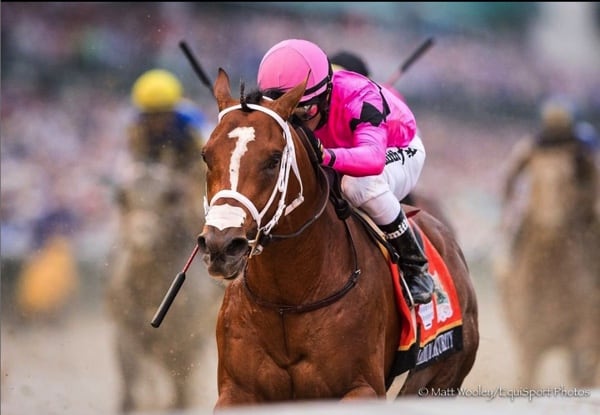
Jockeys are Doing Their Part to Save Horse Racing
Lost in the melee and the aftermath of the 145th running of the Kentucky Derby is the powerful story of how the jockeys have come together to do their part to save horse racing.
These same jockeys, during and after the 2019 Kentucky Derby, landed squarely on opposite sides of the fence of what trainer Mark Casse and jockey Tyler Gaffalione are now calling “the incident”. Despite this disagreement on the Derby disqualification, the jockeys were all able to agree on one very meaningful subject and that’s the topic of my post today: riding crops should not hurt a horse.
Every jockey that rode in this yearʼs Kentucky Oaks, Kentucky Derby, Black Eyed Susan Stakes, and Preakness Stakes rode those races with a riding crop created and crafted by Hall of Fame jockey, Ramón Dominguez. This state of the art riding crop is called the 360 GT.
What’s special about the 360 GT?
The “360” in the name of the crop stands for the popperʼs cylindrical design. The “GT” stands for gentle touch. And make no mistake, the riding crop is accurately depicted by its name.
The contact end of the 360 GT is a high-performance foam cylinder, devoid of any stitching, designed to absorb impact, and eliminate the possibility of abrasion to the horse. While the foam is malleable (a material that feels like a pool noodle or a nerf ball), it is also resilient and will not absorb water or break down, even in extreme weather conditions.
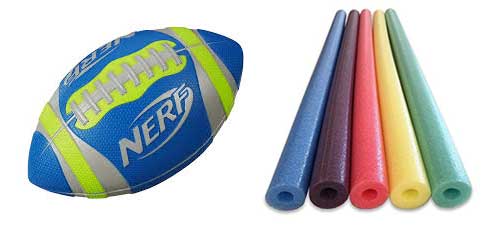
While traditional riding crops do offer cushioning, changing the strike angle even slightly can alter the way the impact is felt by the horse. The 360 GT distributes this impact evenly, no matter how the crop is held.
The 360 GTʼs foam popper was made to be heard. While the impact is gentle, the sound is assertive, clearly communicating a riderʼs intention and encouragement to his or her mount.
As with all the equestrian disciplines, the riding crop is meant to be an aid for the rider

The riding crop is an aid meant to help the horse stay focused on the rider’s commands, whether for safety or for the movement being requested. It serves as a reminder for expected behavior or to encourage the horse to dig deeper. If we could verbally communicate with our horses, it would be like the jockey saying, “Come on! You’ve got this! I’m still riding as hard as I can, I’m still trying, you need to try with me!”
There have been some public outcries suggesting that horse racing should ban the riding crop all together. Since all of our top equestrian disciplines implement riding crops as an aid used both for training and much of competition, this must be an endeavor discussed not just for racing but also for all equestrian sports. However, since my area of expertise lies with racing, I will give you my opinion for its application in racing specifically: I think banning riding crops would be dangerous to both horse and rider. Horses need to be reminded of expected behavior. Asking riders to ride races with no riding crop would be akin to taking your kids to the amusement park and not being allowed to correct them in any way while they are there. Or walking your dog in New York City without a collar and leash. It’s just not safe. For anyone.
“The incident” in this year’s Kentucky Derby is a perfect example of why riding crops should never be banned. Maximum Security ducked out sharply and unpredictably (let’s not get mired in the plausible reasons for that), and within a fraction of a second jockey Luis Saez was using both his left rein and his riding crop (along Maximum Securityʼs right shoulder) to right his course.
Saez probably could have corrected course with the left rein alone but it would have taken valuable seconds during a potentially dangerous situation, and in the midst of that delay, a calamity could have unfolded. Furthermore, without the auxiliary aid of the riding crop and if left only with the reins at his disposal, Saez’s correction on the horse’s mouth would have had to be twice as severe. A good horseman will tell you that a strong correction on a horse’s sensitive mouth is an even harsher correction than the kinder and softer one Saez was able to implement using both the crop, and the reins in concert.
While it is Dominguez who deserves credit for creating the 360 GT the real heroes in all of this have been the jockeys. Namely, Hall of Fame jockeys Javier Castellano, John Velazquez, Mike Smith and (future Hall of Famer) Julien Leparoux who implored their fellow colleagues to use the 360 GT exclusively and unanimously in Americaʼs biggest races this year for three year old fillies and colts.
In fact, Castellano set the standard by using the 360 GT exclusively during the prestigious Keeneland Spring 2019 meet, and in the process, also broke the stakes wins record by a jockey by a comfortable margin.
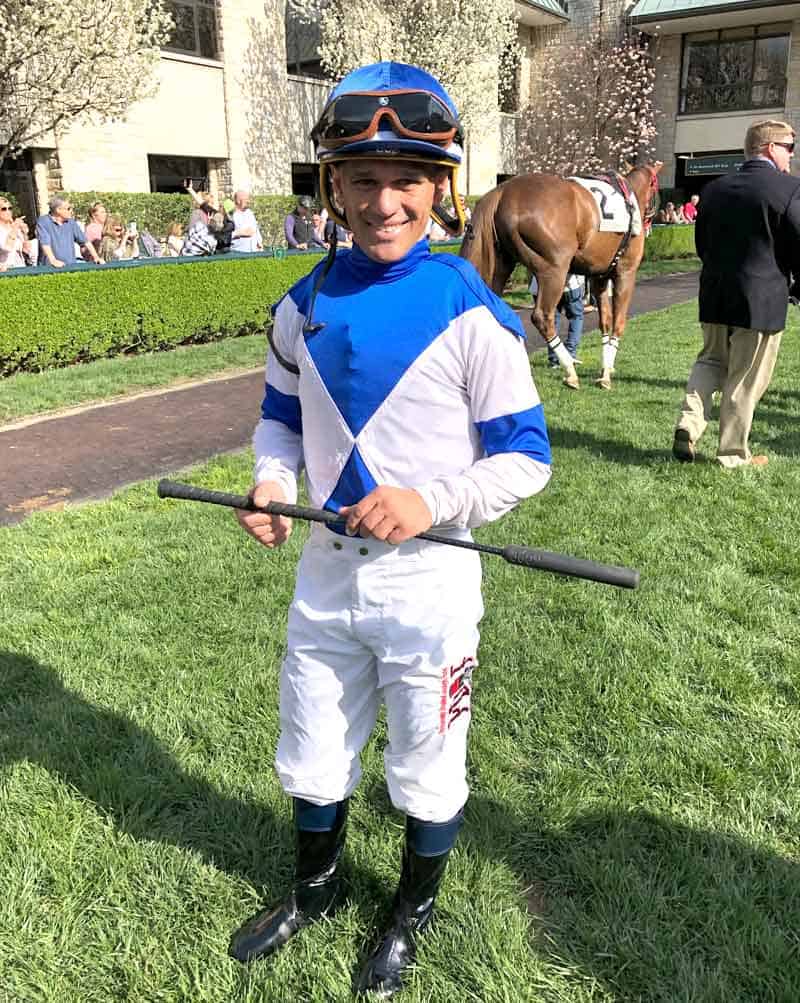
Horsemanship first: from a horse’s first ride, to the horse’s first race and beyond
No one has forced our jockeys to ride with the 360 GT crop– a crop that is difficult to use inappropriately or abusively. They chose to make this change and they made it for a very good reason!
From the first day that a horse is introduced to human touch, and throughout the training process, everything is taught to them through positive reinforcement and built upon a foundation of pleasant experiences.
Good horsemen will tell you that when a rider climbs onto a horse’s back for the first time, everything is done slowly and with a keen eye on the horse and its reactions. Any signs of angst or trepidation are taken as a cue to back off, slow down and then try again, as the horse becomes more comfortable with the weight of the rider on its back.
The same goes for the entire training process. As the horse learns to carry a rider from walking to trotting, and eventually to galloping— all of this is done with full awareness and attention to how the horse is handling each stage of training and consideration is taken when the horse shows any sense of malaise.
When a horse is introduced to the starting gate, this too is done with kid gloves. They are asked gently and encouragingly to approach the starting gate and smell it. If they’re brave and show no signs of apprehension, they may even walk through an open starting gate on their first day, but whatever stage they make it to on day one, the goal is to leave them with a good experience of the starting gate knowing that there are many days ahead to advance its skill.
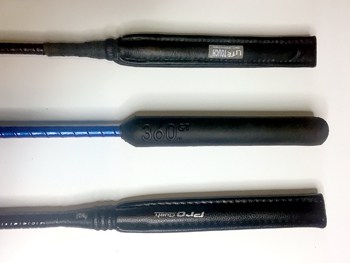
The point to all of this is that everything that is done with these horses, throughout the training process and their careers, is done through positive reinforcement and while paying close attention to the horseʼs reactions. Horses are trained much like dogs: positive reinforcement, and yes, corrections for inappropriate or dangerous behavior.
By the way, the other reason jockeys need the riding crop: horses have no idea where the finish line is! Even horses that have run multiple times are often tried at a variety of distances and at several different tracks. So the use of the riding crop is another way of telling them, “The race is still on! We are not yet at the finish line!”
And for those who will argue that some horses “need to be hit hard and often to run their best”, I would argue that we most likely created that behavior by striking a horse too hard and/or too often when they were already doing the very best they could, and for some horses “too often” may mean once or twice. We have rules in the sport of racing that prevent this from happening, and like the referees of other sports, our stewards are there to make sure it doesn’t happen during a race. They can and do distribute punishments when neccessary.
As with all the equestrian disciplines, racing is a team sport and that team consists of a horse and its rider, coming together in such a way that they become one. It is a thing of beauty to behold and this, at its heart, is the art and sport of racing!
In fact, this is what makes horse racing so special. Thoroughbred horses will run and jump and play and race one another across vast fields without a hint of human interaction. What makes the Thoroughbred so special, especially to anyone who has had the distinct pleasure of riding one, is that these beautiful, stately, powerful and swift-hoofed equines will let us, not only enjoy the sheer beauty of their movement from afar, but will even let us go along for the ride!
As for anyone who suggests we can “make” them run. by the use of the riding crop or through any other means of coercion? Good luck with that! One would have better luck getting a three year old child to run in a race in which it did not want to compete. At least with the child you could bribe him/her with taking away his/her desserts and toys for a month. Horses cannot be bribed. And if a 1,000 pound horse does not want to run in a race there is no amount of persuasion that can change his mind.
The vast majority of Thoroughbreds love to compete but every now and again you’ll see one that does not. Do you know what we do with them? We don’t race them! These are the ones that are moved into other disciplines, un-raced, because they simply did not want to participate in this way.
And so, with Javier Castellano at the forefront of first adopters for the 360 GT (among his many other and admirable accomplishments), it is fitting that he is this yearʼs recipient of the New York Racing Association’s (NYRA) Mike Venezia Award, the distinguished honor awarded to jockeys who exemplify extraordinary sportsmanship and citizenship as he has been one of the biggest proponents for the 360 GT. Past award recipients include Mike Smith (1994), Ramón Dominguez (2013), and John Velazquez (2014).
Norway’s modified whip rules and feedback from their jockeys
As for eliminating the riding crop all together, again, I think this is a horrible idea. From a recent article in the Thoroughbred Daily News, writer Dan Ross shares the jockeys’ feedback on whip-free racing in Norway:
TDN…I checked in to gauge the temperature in the jock’s room, and, as expected, the warm enthusiasm shown by those policing the rules wasn’t mirrored by those being policed.
“What use is that to the jockey?” complained Per-Anders Graberg, a veteran of the jock’s room, about the shading in the rules where jockeys can only correct a horse when it visibly needs correcting, and not before. “If they’re going to duck out, you want to whack them before they do it. Now you’ve got to let the horse duck out and possibly hit someone and then whack it. It’s too late.”
“I always see things happening that you could have avoided carrying the stick,” he added. “They always say, ‘nobody broke their neck the last 10 years.’ It doesn’t have to go that far. Every year you see things that could have ended up better if you had the stick to correct the horse.”
Roughly six or seven years ago, said Graberg, a horse he was riding hung out during a race and broke through the outside rail, leaving the jockey with a broken rib. “I’m pretty sure if I had a stick I could have made the turn,” he said.
(For their part, the stewards have a different reading of this incident, and place a lot of the blame on the narrow nature of the course).
Final thoughts
The leadership that our jockeys have shown this year adopting the 360 GT riding crop, and the respect and care that they have shown for our country’s greatest equine competitors, have left me feeling admiration for this group of athletes that are also horsemen. And their actions have largely gone unnoticed.
If you agree with my opinion and the gist of this story (and I know that not everyone will— and Iʼm ok with that too), please take a moment to thank a jockey the next time you see one riding with the 360 GT. In decades, I think this could be the single best thing that has happened to horses and horse racing.
In the end, this isn’t a problem of horse racing, it’s a problem of good horsemanship. I have confirmed with horsemen in other disciplines that it is in fact possible to put welts on a horse with the crops used in dressage, hunter/jumpers and eventing, and even with the ends of the split reins used in our western disciplines when used inappropriately. I’ve also been told that many of the bits used in these other disciplines are so harsh that permanent damage can and is caused to the mouth when placed in the wrong hands.
So, for starters at least, wouldn’t it be awesome if our other equestrian disciplines were able to adopt the same types of gentle-touch devices that racing is now lucky enough to have? I’m an advocate of education; I’m an advocate of good horsemanship; and I hope it happens— in all disciplines!
SUBSCRIBE NOW, TO GET NEW POSTS FROM DONNA, DELIVERED TO YOUR INBOX.
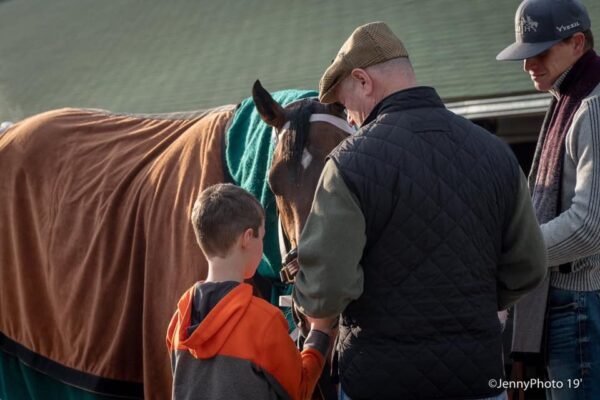
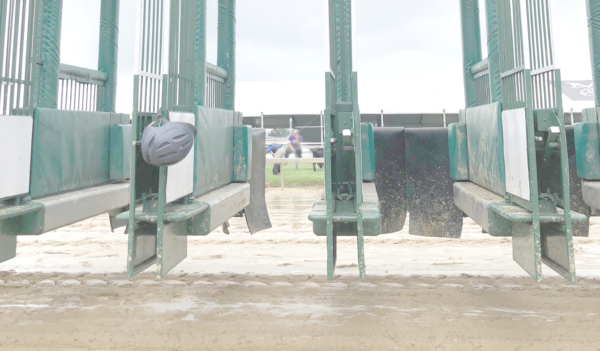
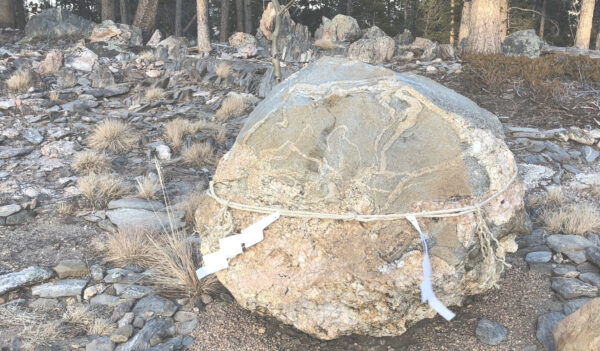
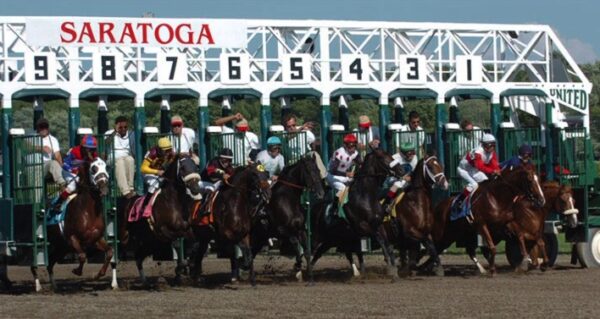
16 Comments
Gloria
I found this article very informative. I had heard of the 360GT and saw Ramon Dominguez at Santa Anita back in April. I wish I’d stopped to talk to him about because I think he had it with him. More than that, I wish certain someones at the TSG would read this and “get it”.
Donna Brothers
TSG actually does get it, Gloria. They were all set to mandate it for exclusive use at their Maryland tracks but there was a glitch in the manufacturing process at the time and Ramon was not able to supply as many as they would’ve needed to do that. He’s working on getting many, many more of these produced… it’s all coming together beautifully!
Keith Hughes
You know I’m “old school” so maybe I’m a bit stubborn when it comes to change. I was probably one of the worst offenders (by todays standards) of whip use. But, as you know, that was a different time with different ideals.
This, however, seems like maybe a good thing. The only thing I would argue about it is that when you have a horse that behaves badly during a race, a jock may want/need a little more strength in the correction. Maybe not. I’ve not actually seen or held one of these so I can’t really say.
Good article
Donna Brothers
Hi Keith,
Good to hear from you! God, I haven’t seen you in forever!!! And, yes, lots of riders back in your day believed that the harder they hit, the more effective they were. And, sadly, so many of the horses you were riding back then had been beaten up so many times they kind of quit caring–and quit responding–so you had to hit them even harder for a response. But those were also the days when most of our dogs lived outside and horses were routinely sold for slaughter at the end of their racing careers… and while we’ve come a long way since then as a society, we still have lots of room for improvement. I cannot agree that we would need a stronger riding crop for correction though. This riding crop is definitely effective without causing pain. By the time a horse gets to a race it should have a clear idea of expected behavior and slight corrections should be all that are necessary. If they are flat refusing to race or trying to bolt to the outside fence a riding crop is not the issue–it’s whatever is causing them to refuse to race or to bolt and until those underlying issues are addressed, no riding crop will fix them. Just my opinion. Thanks for reading, Keith, and for the message!
Ronnie Dreistadt
As an educator at the Kentucky Derby Museum, I found so many things in this article I want to share with our students. Thanks so much for your insight!
Donna Brothers
That’s so good to hear, Ronnie. Eventually I will try to get one of the 360 GT’s to Chanda to have on display in the KDM.
Marie Schwartz
I learned a lot from this article. It is especially informative for folks who have little experience with horses or knowledge about the sport of racing. I loved the analogy, the explanation of getting the horse used to the starting gate and the clear explanation of the utilitarian use of the crop in many equestrian sports in addition to racing. (I had never thought about the fact that the horses don’t have an idea where the finish line is, which make a great deal of sense knowing that they are breezed, galloped and raced different distances depending upon day.) It is great to illustrate how race horse industry is developing equipment and improving facilities to improve the safety of the sport for both horse and rider.
Donna Brothers
Marie,
Thanks for your feedback! And I thrilled that you found the article to be informative and, perhaps, instructive.
Tex Lerena
Top article, and all the best to Javier and his 360 “Crop”
The converted,
Tex Lerena.
South Africa ??
Donna Brothers
A converted South African! No easy task 😉 Thanks so much, Tex. Loved your country when I visited in July 2017.
Be well,
Donna
Allie
Good article
Donna Brothers
Thank you, Allie.
Nels Pierson
Thank you for posting this ??
Donna Brothers
Thank YOU for reading it, Nels!
Terri D Bey
Great job, Donna. Now, if only the people running Santa Anita and the California Racing Board would just LISTEN.
Donna Brothers
If only… Thanks, Terri!